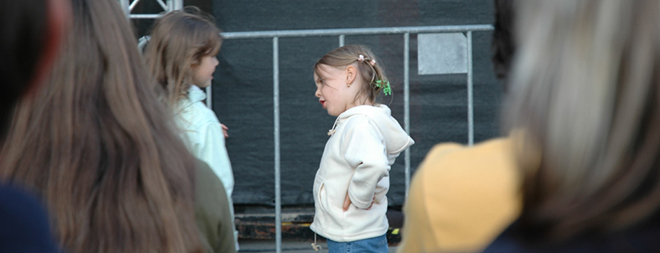The Physics Of Tuning Out

(ISNS) – In a crowded room, how do you focus on your companion's voice while ignoring the conversations going on around you? A digital model of the cochlea, the shell-shaped organ that serves as an interface between sound waves and the nervous system, suggests the ear begins filtering out background sounds before they even reach the brain.
Studying how the brain hones in on a single voice, a phenomenon known as the "cocktail party effect," can help unlock how the brain perceives sound. But it's not just about the brain. For several decades, researchers have suspected that other parts of the auditory system also play a big role.
For the brain to interpret sounds, it needs nerves to bring it signals from the ear. But it is not just a one-way street. The auditory system also includes so-called efferent nerves, which carry signals from the brain back to the ear. This creates a feedback loop within the auditory system, which may play a role in selective attention.
"It's very hard, physiologically, to test that idea though," pointed out Jonathan Ashmore, a professor of biophysics at the University College London's Ear Institute. "And even harder to think about the mechanisms that might implement the idea."
Rather than attempting to solve this problem by looking at the biological auditory system, researchers at the University of Zurich in Switzerland tackled the issue from another angle: physics. They tested the cocktail party effect on a digital model of the cochlea.
The cochlea not only translates auditory signals into stimuli that the brain can interpret, it also amplifies faint sounds. To simulate the behavior of this complex organ, the Zurich team of theoretical physicists, led by Ruedi Stoop, developed a gargantuan mathematical equation in 2002. Although the equation successfully imitated the cochlea's behavior, it was unwieldy, taking three to four hours to complete its calculations.
So in 2004, Stoop's group simplified their design and built an electronic cochlea model using parts they purchased at an electronics shop. "We obtained a device that was just perfect," Stoop explained. "We reproduced results that you could not say which was from biology and which was from the device."
Sign up for the Live Science daily newsletter now
Get the world’s most fascinating discoveries delivered straight to your inbox.
The researchers patented their simplified cochlea model, and then translated the physical apparatus back into digital form, turning it into a software program. This artificial cochlea could accurately reproduce the experimental responses of the biological organ.
Stoop's team then used their model to study the cocktail party effect. Their results, published in Physical Review Applied, reveal the cochlea is capable of targeting a specific sound signal, such as a voice, based on its pitch. It knows what pattern to look for because of feedback from the efferent nerves.
The brain can store a familiar voice as a sort of template. When it knows it wants to focus on this voice, it sends the template to the cochlea through the efferent nerves. Knowing which sounds to expect, the cochlea tunes in to sounds that fit the template. It does so not by turning up the volume of the voice, but by dampening the sounds that don't match the template.
This type of feedback loop is possible within Stoop's digital model. But does it describe the actual way the brain and cochlea communicate?
"This type of model is generic -- it captures the features of the cochlea in a simple way," said Ashmore. "But we don't really know what the biological implementation is. All you know is whether it fits the experimental data. It's being used as a playground, to study the possibility of efferent control."
Stoop hopes his model could one day have other applications as well. It might lead to better medical cochlear implants. And the principles behind the software could go towards improving sound recognition programs. Stoop also suggested that sensitive sound detectors in, say, your car might be able to recognize and diagnose engine troubles.
Ashmore is less optimistic. "Cochlear models may be helpful in designing better cochlear implants, or some future prosthesis which replaces poorly working or damaged inner ears. That's a bit of a long shot, but it's not impossible. If you wanted a bionic ear, you'd have to design it with some of these cochlear designs in mind. But I don't know if this particular model is an easy one to implement electronically."
This story was provided by Inside Science News Service. Sophie Bushwick is a freelance science writer based in New York City. Her work has appeared in numerous print and online outlets. She tweets at @sophiebushwick.










